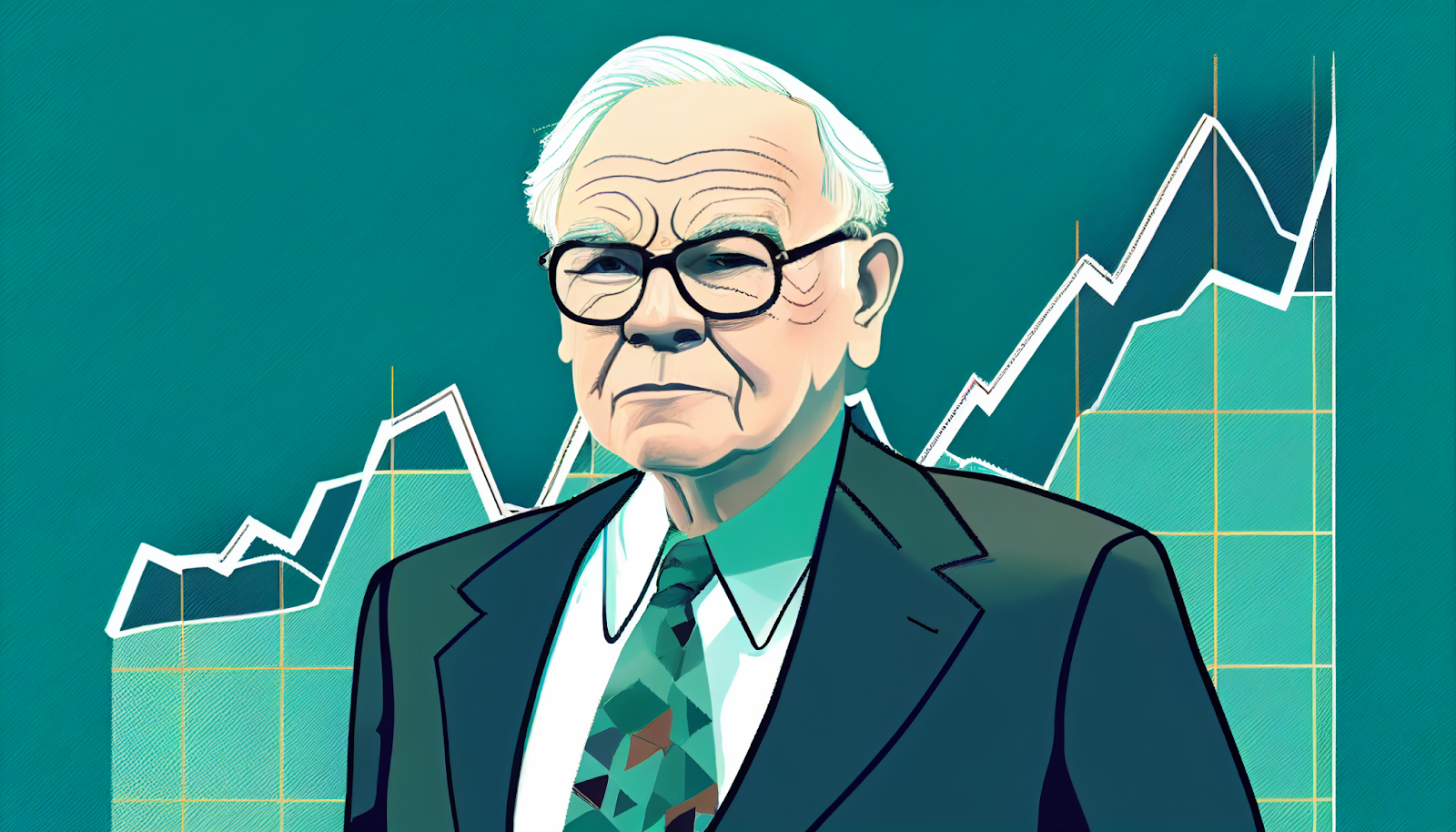Once upon a time, a legend was born in the finance world. Benjamin Graham, the man who would one day be hailed as the “Father of Value Investing,” entered the scene. His story is one of triumph, intellect, and undeniable influence. Are you ready to dive into the life of the man who changed investing forever?
In this post, we’ll take a closer look at the life of this financial genius, uncovering his impressive background, awe-inspiring career milestones, and the groundbreaking investment strategies that catapulted him to fame. We’ll guide you on incorporating his investment philosophy into your life, ensuring your triumph in this constantly evolving domain!
So, brace yourself for a thrilling journey into the mind of the man who forever changed how we think about investing!
Early Life and Education
Let’s explore Graham’s early upbringing and the educational journey that catapulted him to unparalleled heights of success.
From Humble Beginnings to Iconic Investor
Born amidst the bustling streets of London in 1894, Benjamin Graham’s family moved to New York City when he was just a year old. Unfortunately, his early years were far from easy. To escape anti-Semitic and anti-German sentiments, his parents boldly decided to change their last name from Grossbaum to Graham.
Benjamin’s father, a once-successful importer, died of cancer when Ben was just nine years old, leaving him with financial uncertainty. But much like the successful investor Peter Lynch whose father also faced an untimely death, Graham’s unwavering resilience and sheer determination set him on a unique path to greatness.
From a young age, Graham’s passion for learning knew no bounds. He excelled in his studies, mastering multiple languages all by himself. At 20, a prestigious scholarship whisked him to Columbia University in New York City. Here, he would develop an insatiable thirst for the exciting world of finance.
Columbia University: Where Legends Are Born
Under the watchful eyes of the era’s most influential economists, Graham soared through his studies at Columbia. In just two and a half years, he graduated with degrees in both English and Mathematics.

His remarkable academic prowess caught the attention of many, leading to job offers in English, Mathematics, and Philosophy. But it was the siren call of Wall Street that truly captivated his heart.
Wall Street: The Birthplace of a Legend
In 1914, Benjamin Graham embarked on his thrilling career as a humble clerk at the esteemed brokerage firm of Newburger, Henderson & Loeb. His razor-sharp analytical mind and relentless work ethic catapulted him up the ranks, and by the tender age of 25, he had already become a partner at the firm.
During this period, Graham amassed an impressive $500,000, only to lose nearly all of it in the devastating stock market crash of 1929. But this crushing setback couldn’t keep him down. Undeterred, he bounced back with a vengeance, leveraging his brilliant investment strategies to achieve even greater success.
Graham’s Wall Street journey unfolded during the Roaring Twenties, an era of unparalleled economic growth and dizzying stock market speculation. Amidst this whirlwind, he began crafting his revolutionary investment philosophy, now revered as “value investing.”
This powerhouse investment strategy propelled Benjamin Graham into a remarkable investing career marked by extraordinary accomplishments and a dazzling portfolio.

Career Highlights & Milestones
Graham, often hailed as the “Father of Value Investing,” was a man whose legacy included numerous successes and breakthroughs. In this section, we’ll dive into some of his most significant career highlights, showcasing his impact on the finance world and beyond.
The Birth of the Graham-Newman Partnership
In 1926, Benjamin Graham opened his own investment firm, Graham-Newman Corporation, with his partner Jerome Newman. Little did they know their venture would become one of the most successful investment firms in history.
Despite the economic turmoil, Graham-Newman Corporation managed to thrive. How did they do it? Benjamin Graham had a secret weapon: his investment philosophy, which he called “value investing.” This approach focused on finding undervalued stocks with strong fundamentals rather than chasing the latest trends.
By sticking to this philosophy, Graham-Newman Corporation achieved an astonishing 17% annualized return over its 20-year history. In perspective, the S&P 500 only returned 12.2% during the same period.
GEICO: A Case Study of Graham-Newman Co.’s Success
One of the most famous examples of Graham’s value investing approach was his investment in GEICO. In 1948, he discovered that the insurance company was trading at just $27 per share while its book value was $56. Sensing a bargain, Graham purchased 50% of the company for $712,000.
It wasn’t long before a young Warren Buffett also discovered GEICO, captivated by the fact that his mentor, Graham, held the position of chairman of the board. This revelation ignited a fire within Buffett, fueling an unparalleled enthusiasm for GEICO’s stock. Without hesitation, he began acquiring shares, more exhilarated by this investment than any other in his life.
Over the next few decades, GEICO’s value skyrocketed, reaping massive profits for both the Graham-Newman Corporation and Buffett’s Berkshire Hathaway. And by the time Graham-Newman Corporation closed its doors in 1955, that initial investment was worth a staggering $400 million. This 56,000% return on investment is a testament to the power of value investing.
Mentorship to the Oracle of Omaha

While running Graham-Newman Corporation, Benjamin also started teaching at Columbia Business School, imparting his investment knowledge to eager students. His teachings continue to resonate within the finance world, with countless investors still adhering to his timeless principles today.
One of Benjamin Graham’s most famous students is none other than the “Oracle of Omaha,” Warren Buffett. Buffett enrolled in Graham’s classes at Columbia Business School, where he became deeply influenced by Graham’s investment philosophy. In fact, Buffett has often credited Graham as the single most significant influence on his investment approach.
Upon graduating, Buffett eagerly joined Graham’s prestigious investment firm, sharpening his already impressive investing skills. This pivotal mentorship between Graham and Buffett revolutionized the finance world, as Buffett skyrocketed to become a legendary investor, brilliantly applying the invaluable principles learned from Benjamin Graham.
The Core Principles of Benjamin Graham’s Investing Philosophy
Discover the timeless investment strategies of Benjamin Graham, the mastermind behind Warren Buffet’s success!
The Value in Value Investing
Value investing: a timeless strategy crafted by Benjamin Graham. But how does it work? In essence, value investing is the art of snatching up stocks for less than their true worth, anticipating that the market will eventually wake up to the company’s real market value, resulting in sweet capital gains. These companies are also commonly referred to as “net-net stocks.”
Is this approach worth the buzz? Absolutely, and Warren Buffett himself is living proof!
Buffett, an investment legend and Benjamin Graham’s student penned a groundbreaking study in 1984 called “The Superinvestors of Graham-and-Doddsville.” In this masterpiece, Buffett showcased the triumphs of several investors who embraced Graham’s value investing wisdom.
These “Superinvestors” consistently outperformed the market by leaps and bounds, validating the power of value investing. Buffett’s own investment juggernaut, Berkshire Hathaway, has churned out annual returns exceeding 20% since 1965, primarily by staying true to value investing principles.
And while net-net stocks are harder to come by as markets become more efficient, the key tenets remain the same.
Enter the Margin of Safety

A cornerstone of value investing is the concept of the margin of safety. Graham insisted that investors should only snap up undervalued stocks.
This markdown offers a buffer against potential losses if the company’s performance or the market’s view of the company’s value takes a nosedive. Essentially, the margin of safety is the gap between a stock’s market price and its intrinsic value, providing a financial safety net for investors.
Graham’s method for calculating the margin of safety involved a rigorous analysis of a company’s financial statements, zeroing in on factors like earnings, dividends, and assets. By pinpointing companies with robust fundamentals at bargain prices, he aimed to minimize the risk of permanent capital loss while maximizing the potential for juicy returns.
Dive into Fundamental Analysis

Benjamin Graham knew that the secret to thriving in the market was through rigorous fundamental analysis. You can uncover its true intrinsic value by delving deep into a company’s financial health, competitive standing, and future prospects. Comparing this value to the stock’s current market price reveals hidden gems – undervalued opportunities with the potential for substantial returns.
So how do we do it? Start by examining financial ratios like the price-to-earnings (P/E) and price-to-book (P/B) ratios. These metrics provide insights into a company’s profitability, growth potential, and overall financial well-being.
But don’t stop there – dig deeper by scrutinizing balance sheets, income, and cash flow statements to uncover risks and opportunities lurking beneath the surface. Look for companies with the following:
- Consistent track records of profitability
- Consistent earnings growth
- Dividend policies to provide a steady income stream during turbulent market conditions
Embrace the Long Game

Benjamin Graham championed adopting a long-term perspective when evaluating potential investments. He recognized that short-term market fluctuations could create irrational pricing, leading to golden opportunities for value investors with the patience to hold onto their investments.
To thrive in this long game, cultivate patience and discipline. Focus on the underlying fundamentals of a company and resist getting swept up in the emotional rollercoaster of the market. Remember, it may take time for the market to recognize a stock’s true value – but when it does, the rewards can be well worth the wait.
Diversify Your Investment Portfolio

Benjamin Graham knew a thing or two about minimizing risk and maximizing long-term gains. His secret weapon? Diversification. By spreading your investments across a wide range of assets, you can weather any storm and emerge victorious in the financial game.
You see, the stock market is a fickle beast. Predicting which stocks will soar and which will plummet is a fool’s errand. But fear not, for diversification is here to save the day! By casting a wide net, you can revel in the wins while shrugging off the losses, keeping your portfolio’s value intact.
So, how can you harness the power of diversification? Here are some tips for creating your own diversified investment buffet:
- Asset Allocation: Don’t put all your eggs in one basket. Spread your investments across stocks, bonds, real estate, and cash to strike the perfect balance.
- Sector Diversification: Variety is the spice of life – and the key to a healthy portfolio. Invest in a range of industries and sectors to avoid getting burned by a single market meltdown.
- Geographic Diversification: The world is your oyster, so why not invest in companies from different countries and regions? This way, a local economic downturn won’t leave you high and dry.
- Investment Style Diversification: Mix it up with different investment styles, including value, growth, and income. This way, you’ll be ready for whatever the market throws your way.
Contrarian Investing: Go Against the Crowd

Dare to defy the norm! Graham staunchly advocated for contrarian investing, a bold strategy that challenges popular opinion to uncover undervalued gems. But what made this approach so crucial to him, and what are the perks of embracing contrarian investing?
Prices can skyrocket when the masses go gaga over a specific stock or sector. Contrarian investors, however, hunt for stocks that the market has neglected or undervalued, often reaping more impressive long-term returns. By swimming against the tide, contrarian investors encounter less competition in their quest for investment opportunities. This paves the way for more favorable pricing and an increased potential for profit.
The Art of Defensive Investing

Be a defensive investor! Defensive investing is a masterful approach to wealth management that puts capital preservation and steady growth on a pedestal, leaving high returns in the dust. This genius strategy is the brainchild of, you guessed it, Benjamin Graham!
This investment technique includes searching for top-notch companies that dish out dividends and compete in diversified markets. So what’s a shining example of a defensive investment?
Look no further than Johnson & Johnson (JNJ), a multinational healthcare giant! JNJ has a storied history of unwavering stability, financial prowess, and reliable dividend payments. Feast your eyes on these critical characteristics that make JNJ a defensive investment:
- Reigning supreme in various healthcare realms, including pharmaceuticals, medical devices, and consumer products.
- Unwavering revenue and earnings growth.
- A rock-solid balance sheet with barely a hint of debt.
- A true dividend aristocrat, having consistently upped its dividend payouts for a jaw-dropping 50+ consecutive years.
The Art of Enterprising Investing
Enterprising investing, an approach championed by Benjamin Graham, captivates investors eager to embrace higher risks for the promise of remarkable returns. This strategy demands a proactive touch and a profound mastery of market dynamics.
Enterprising investments often have more risk and require proactive management with a long-term vision. Enterprising investors are treasure hunters, seeking out undervalued assets to capitalize on market inefficiencies and mispriced securities.
Coca-Cola is a shining example of an enterprising investment. The iconic beverage company has a long history of stability, growth, and strong financial performance, providing attractive returns for investors.
Let’s check out Coca-Cola’s characteristics that make it an enterprising investment:
- A well-established and globally recognized brand, enjoying a strong competitive advantage and customer loyalty.
- Consistent revenue and earnings growth, backed by a diversified product portfolio and strategic acquisitions.
- A relatively stable investment with lower stock price volatility compared to high-growth companies.
- A strong track record of dividend payments, making it an attractive option for income-seeking investors.
- A long-term growth story, with investors confident in the company’s ability to adapt to changing consumer preferences and maintain its market leadership.
Of course, we must remember that Benjamin Graham’s investment wisdom may not perfectly align with your unique approach or financial aspirations. Ultimately, it’s crucial to harness these priceless insights on your journey, while also embracing the freedom to experiment with your own investment tactics and absorb knowledge from other esteemed financial gurus.
Modern Adaptations of Benjamin Graham’s Investment Principles
Let’s see how Benjamin Graham’s investment philosophy has impacted modern-day investing!
How Warren Buffett Implemented Value Investing
Today, the legendary influence of Benjamin Graham’s investment principles is evident, with Warren Buffett standing as the most prominent example.

Warren Buffett’s awe-inspiring ascent to the helm of Berkshire Hathaway traces its roots to his mentor, Benjamin Graham, and the timeless value investing principles he championed. As a devoted student, Buffett embraced these principles, transforming a floundering textile company into an unstoppable conglomerate.
With a modest $100 investment back in 1956, Buffett laid the foundation for his stake in Berkshire Hathaway, a struggling textile enterprise at the time. He recognized the untapped potential in the company’s undervalued assets and eagerly bought shares.
By 1965, Buffett had seized control of the company, leveraging Graham’s principles to steer Berkshire Hathaway into the realms of insurance and investments, eventually skyrocketing it into a staggering $600 billion conglomerate.
Initially, Buffett’s approach mirrored Graham’s “cigar butt” investing strategy—seeking out companies with just one “puff” of value left. However, Buffett’s approach evolved as time passed, favoring companies boasting strong competitive advantages, or “economic moats.”
Value Investing in Today’s Market: Still Relevant?
In today’s fast-paced world of high-speed trading and tech-driven growth stocks, some may doubt the significance of value investing. Yet, Buffett’s enduring success is a shining example of the potency of value investing principles.
Finding undervalued gems in the current market might be challenging, but value investing remains an excellent strategy for patient, long-term investors. By honing in on a company’s fundamentals and competitive edge, value investors can still pinpoint opportunities for growth and wealth creation.
The Piotroski Study: A Modern Take on Graham’s Principles
Let’s dive into Joseph Piotroski’s game-changing study, “Value Investing: The Use of Historical Financial Statement Information to Separate Winners from Losers.” This captivating research breathes new life into Benjamin Graham’s classic value investing strategy, proving that these timeless principles are still a force to be reckoned with today.
Piotroski’s study focused on value stocks with enticingly low price-to-book ratios. After poring over data from 1976 to 1996, Piotroski unearthed some eye-opening findings:
- Value stocks, on average, trounced the market with impressive gains.
- Not all value stocks are cut from the same cloth. Performance within the value category spanned a vast spectrum.
- He pinpointed a group of value stocks that consistently left the market in the dust by employing a set of financial criteria.
In a nutshell, Piotroski’s research validated Benjamin Graham’s enduring principles and revealed that investors could turbocharge their results by weaving historical financial statement information into their analysis.
Challenges and Opportunities for Modern Value Investors

Of course, modern value investors still face several challenges, such as:
- Market efficiency: In our high-tech world with information at our fingertips, discovering undervalued stocks feels like searching for a needle in a haystack.
- Short-term obsession: The race for instant gratification leads many investors to chase quick returns, making it tough for value investors to stay focused on the long game.
- Fierce competition: As value investing principles gain popularity, the quest for undervalued gems grows increasingly intense.
Yet, the investing landscape also offers exciting opportunities for the modern value investor, such as:
- Globalization: Broadening your investment horizons to encompass international markets can unearth hidden value treasures.
- Disruption: Innovations and evolving consumer tastes forge new industries and lucrative investment possibilities.
- ESG investing: Zeroing in on companies with robust environmental, social, and governance practices can pave the way for long-term value creation.
Embrace these opportunities and navigate the challenges to unlock the full potential of modern value investing!
Modern Tools and Resources for Value Investing

Luckily, today’s value investors have a treasure trove of cutting-edge tools and resources at their fingertips. These invaluable assets empower them to make well-informed investment decisions.
Let’s dive into some of these game-changing tools:
- Financial websites and apps: Powerhouses like Yahoo Finance, Seeking Alpha, and Morningstar deliver a wealth of financial data and razor-sharp analysis on a staggering array of stocks.
- Investment newsletters: Renowned publications such as The Motley Fool and Value Line serve up a smorgasbord of stock recommendations and investment wisdom, all rooted in the time-tested principles of value investing.
- Online forums and communities: Vibrant digital hubs like Reddit’s r/investing and the prestigious Value Investors Club offer a bustling platform for investors to exchange groundbreaking ideas and priceless insights.
Getting Started with Benjamin Graham’s Investment Principles
Are you eager to apply Benjamin Graham’s game-changing investment strategies to your own life? Unleash your inner financial genius by exploring his groundbreaking teachings through his various books and online courses.

Begin your journey with Graham’s 1934 masterpiece, “Security Analysis.” This essential tome unravels the art of scrutinizing securities and pinpointing their intrinsic value. It’s the ultimate guide for honing your investment analysis prowess.
But wait, there’s more! In 1949, Benjamin Graham wrote “The Intelligent Investor,” a book hailed as the “bible” of value investing. This timeless classic lays the groundwork for thriving investments by imparting the principles of value investing. It’s an absolute must-read for anyone committed to crafting a value-driven investment portfolio.
But why stop there? Quench your thirst for knowledge with online courses that teach value investing principles. Platforms like Coursera, Udemy, and edX offer immersive courses led by expert instructors, brimming with real-world case studies and interactive experiences to help you master the art of value investing.
Graham’s Legacy and Influence on Modern Investing
Benjamin Graham’s investment philosophy has significantly impacted modern investing, shaping various styles and strategies that continue to thrive today. Let’s explore how his teachings have impacted other investment strategies and the mindsets of contemporary investors!
Growth Investing
Graham’s value investing principles have deeply influenced growth investing, a strategy that zeroes in on companies poised for exceptional growth. While Graham’s focus was on uncovering undervalued stocks, his emphasis on fundamental analysis and the crucial concept of a margin of safety has guided growth investors in making smarter choices when selecting high-growth stocks.
Momentum Investing
Momentum investing, which involves buying stocks with robust price trends and selling those with weak trends, can trace its roots back to Graham’s teachings. Although it may seem at odds with his value investing approach, it’s his stress on objective, quantitative analysis that set the stage for momentum investors. By honing in on measurable factors like price trends and relative strength, momentum investors, much like Graham’s value investors, can make data-driven decisions.
Quality Investing
Quality investing, a strategy that prioritizes stocks with robust fundamentals and low debt, is yet another investment style shaped by Graham’s teachings. His belief in investing in companies with solid financials and a competitive edge are key tenets of quality investing. By targeting companies with strong balance sheets and sustainable competitive advantages, quality investors aim to minimize risk and achieve long-term capital appreciation.
Influence on Contemporary Investors and Financial Thought Leaders

Seth Klarman, a renowned investor and author of the highly-regarded book “Margin of Safety,” is a proud disciple of Benjamin Graham. Klarman’s investment philosophy revolves around the concept of margin of safety, a principle he learned from Graham.
This investment strategy involves buying stocks at a significant discount to their intrinsic value, providing a cushion against market volatility potential losses. Klarman’s success and the popularity of his book have helped to further propagate Graham’s investment principles to a new generation of investors.
Joel Greenblatt is yet another successful investor and author who has been heavily influenced by Graham’s teachings. In his book “The Little Book That Beats the Market,” Greenblatt introduces the “magic formula,” a quantitative investment strategy that blends elements of value and quality investing.
The magic formula ranks stocks based on their earnings yield and return on capital, reflecting Graham’s focus on strong fundamentals and attractive valuations. Greenblatt’s book has become a must-read for investors seeking a straightforward, data-driven approach to stock selection, further solidifying Graham’s influence on modern investing.
Conclusion
Benjamin Graham’s legacy shines as a guiding light of wisdom in the investing world. His principles, built on thorough analysis and unwavering discipline, have influenced generations of investors. Those who follow his teachings reap the rewards, proving their timeless value.
As we honor Graham’s incredible life, let’s embrace the lessons he taught. For budding investors, mastering these principles unlocks the immense potential within the world of finance. The journey may be challenging, but the financial and personal rewards are worthwhile.
So, dear reader, let Benjamin Graham’s spirit be your compass as you dive into investing. Absorb his wisdom, apply his teachings, and seize the rewards that await those who walk in his footsteps. By doing so, you’ll etch your name in the annals of investing history and contribute to Graham’s enduring legacy.
AI content! That sucks
Thank you for letting us know! Looks like I wrote the review just a few days too early.